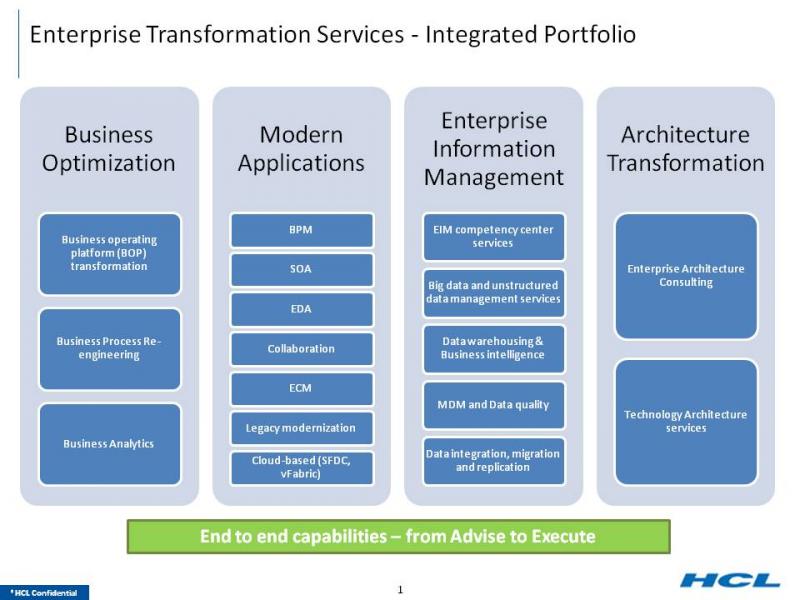Don’t Miss The Transformation Boat When Modernizing IT
I recently got a briefing from HCL about its Business Process Management practice, and we are hosting a joint webinar on April 4th. The briefing was impressive in that HCL is focused on large scale business transformation projects — what we call Big Process. When we got to the following slide, the wheels in my head started turning.

This graphic depicts how IT is modernizing IT infrastructure to include BPM, enterprise content management (ECM) collaboration, and social to expand the IT architecture beyond enterprise suites — like ERP and CRM — which are systems of record rather than systems of engagement. This IT legacy renewal is powerful, and, by focusing on technologies that support systems of engagement, it will position the business to support customers in new and exciting ways and to be more creative and collaborative throughout the organization. In fact, I recently talked with an executive from Pegasystems about the same thing, and he said virtually all of its customers are focused on modernization.
During our discussion, I asked HCL if IT modernization works, and they said yes, it works especially well when there is a corresponding top-down business transformation exercise providing the context and justification for bottom-up IT modernization. In the rest of the cases, where it’s more from the bottom up than the top down, IT modernization stutters along due to lack of business case and funding.
More importantly, if CIOs only focus on modernization and fail to work with the business, the opportunity for transformation will slip away. It’s only by marrying the process improvement and process transformation efforts that the business primarily leads with IT modernization that organizations can transform how they serve customers, deploy global processes in support of global expansion strategies, and support compliance.
But — and this is a big but — this is not about IT bashing. IT often gets ideas about ways to transform the organization by putting in transformative technologies, but gets no support or sponsorship from the business. So the burden is also on the business to link business process transformation with IT modernization — that’s what the companies that are doing big things with process transformation have managed to accomplish. And the Six Sigma and Lean teams working in the business should take note as well — there are new BPM technologies that can codify process improvements that support iterative changes/improvements, and they cannot continue to work in a vacuum by leaving software products out of their process excellence efforts.
The lesson learned by successful Big Process deployments? Go top down and bottom up, and partner process improvement and IT practitioners so that the organization deploys IT modernization as well as business process transformation from the outside-in. That way, your company won’t miss the business process transformation boat.